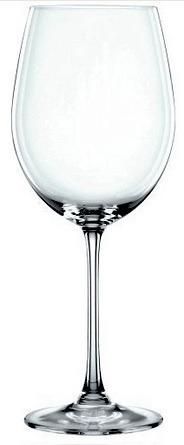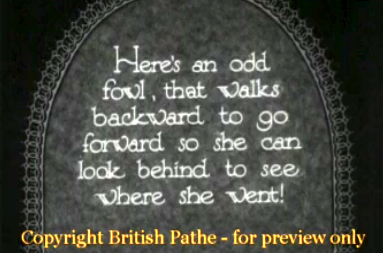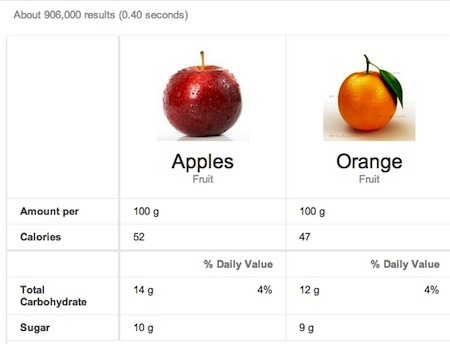Marc Abrahams's Blog, page 460
September 30, 2013
Wine Mis-estimation, by the Glass
 Wine inspires many unexpected things, including this study:
Wine inspires many unexpected things, including this study:
“Half Full or Empty: Cues That Lead Wine Drinkers to Unintentionally Overpour.” Doug Walker, Laura Smarandescu, and Brian Wansink, Substance Use and Misuse, epub September 12, 2013. (Thanks to Margo Seltzer for bringing this to our attention.)
Co-author Brian Wansink was awarded the 2007 Ig Nobel Prize for nutrition, for exploring the seemingly boundless appetites of human beings, by feeding them with a self-refilling, bottomless bowl of soup. [REFERENCE: "Bottomless Bowls: Why Visual Cues of Portion Size May Influence Intake," Brian Wansink, James E. Painter and Jill North, Obesity Research, vol. 13, no. 1, January 2005, pp. 93-100.] In the new study, the authors, at Iowa State University and Cornell University, report:
“Wine drinkers often pour their own wine, but is the amount they pour influenced by the shape of the glass, the color of the wine, or how they pour? Building on research involving visual illusions and haptic cues, an exploratory field study shows that while wine drinkers typically poured 3.95 fl. oz. of wine into a standard baseline (10 fl. oz.) glass, they poured 11.9% more into a wider glass, 9.2% more when the wine was white (the low contrast with the glass makes it difficult to see), and 12.2% more when the wine glass was held in their hand rather than sitting on the table. Using narrower wine glasses and not pouring while holding one’s glass may be steps toward modestly reducing the amount of wine a social drinker pours and drinks.”
National Monitor reports on this report, under the headline “Researchers discover secrets behind unintentional overpouring of wine“.

The loadbearing capacity of the Taishuh horse (study)
The keeper of the ‘Bridge of Death’ (Terry Gilliam) made a grave error in not specifying to which breed of swallow his question applied. But authors A. Matsuura, S. Sakuma, M. Irimajiri and K. Hodate from the Department of Animal Science, School of Veterinary Medicine, Kitasato University, Towada, Aomori, Japan, have made no such mistake – they specify the horse breed known as the Taishuh in their study of loading weights. [Note: The breed is extremely rare – according to Wikpedia there are only around 65 of them alive] Via the pages of the Journal of Animal Science (August 2013 vol. 91 no. 8) the team have, for the first time, answered the -
Question : “What is the maximum permissible load weight of a Taishuh pony at a trot?”
Answer : “The maximum permissible load weight of the Taishuh pony trotting at 3.0 m/s over a short distance is less than 100 kg (43% of the body weight)”
See – ‘Maximum permissible load weight of a Taishuh pony at a trot’

September 29, 2013
Should this essay about fame become famous?
 A person could go insane trying to calculate the effects of telling other people about this essay: “Homo Narrativus and the Trouble with Fame“. Written by Peter Sheridan Dodds [pictured here], the essay sums itself up in the phrase “We think that fame is deserved. We are wrong.”
A person could go insane trying to calculate the effects of telling other people about this essay: “Homo Narrativus and the Trouble with Fame“. Written by Peter Sheridan Dodds [pictured here], the essay sums itself up in the phrase “We think that fame is deserved. We are wrong.”
(Thanks to Uta Frith, who as it happens is married to an Ig Nobel Prize winner, for bringing this to our attention.)
BONUS: A list of Professor Dodds’s publications, including a selection headed “Papers enjoying the review process”
BONUS PROJECT: Part A: Calculate how famous is Peter Sheridan Dodds. Part B: Calculate how famous will be his essay about fame.
BONUS: One of Eric Schulman’s articles about fame.

September 28, 2013
Deceivers Deceived: Devilish Doubletalk
Today’s Misrepresentations and Doubletalk Study of the Day is:
“Deceivers Deceived: Devilish Doubletalk in Inferno 21-23,” Christopher Kleinhenz, Quaderni Dilaliamstica, vol. 10. nos. 1-2. 1989. The author, at the University of Wisconsin, explains:
“In the course of their journey downward through the eighth circle of Hell, through the series of ten concentric ditches (bolge) which form the Malebolge, Dante the Pilgrim and his guide Virgil complete their observation of the diviners and move toward the bridge over the fifth bolgia, talking of matters that are not pertinent to the poem. The opening verses of canto 21 of the Inferno announce in their flowing, casual — one might even say, lighthearted — scene that is to come…”

A backwards film: chickens and Flannery O’Connor
British Pathe makes available one of their old films, in which animals are shown (though the magic of technology) walking backwards. The little girl in the film grew up to be the author Flannery O’Connor, so they say.
(HT Jeff Betancourt)

Tonight: Ig Nobel Night in Perugia!
Join us at the Perugia Science Fest tonight—Saturday, September 28, at 9:00 pm.
DETAILS: Perugia Science Fest, Sala di Notari. Science journalist Silvia Bencivelli will introduce and dialogue with Marc Abrahams. The evening features Ig Nobel Prize winners Alberto Minetti (new Italian Ig Nobel winner!) and Kees Moeliker (homosexual necrophilia in the mallard duck).

September 27, 2013
Dr. Siegel self-publishes his retracted p-value article
 “‘Penis Envy’ was published February 14 on PsychologyToday.com and removed two weeks later,” claims Dr. Stanley Siegel, who then inserted his article into his own site.
“‘Penis Envy’ was published February 14 on PsychologyToday.com and removed two weeks later,” claims Dr. Stanley Siegel, who then inserted his article into his own site.
The article includes a story that Dr. Siegel [pictured here] clearly treasures—a story some might be tempted to consider apocryphal—about one of his patients whose father was a mohl, a professional circumciser.
(Thanks to investigator Erwin Kompanje for bringing this to our attention.)

Comparing Apples & Oranges with Apples and Oranges
Investigator Dan Fingerman writes:
In light of AIR’s classic article by Scott Sandford on comparing apples and oranges, I thought you might appreciate this. Google has introduced an algorithmic way to compare two items (such as apples & oranges). Google will compare the two items when search terms are entered in the form: compare item1 item2.
Here is the result when Google’s algorithm is asked to compare apples and oranges:
https://www.google.com/search?q=compare+apples+oranges

Pectoral implants – a short history
Back in 2002, Dr. Gary F. Horn M.D. of Paris, France, introduced ‘A New Concept in Male Chest Reshaping: Anatomical Pectoral Implants and Liposculpture’ (Aesthetic Plastic Surgery, Volume 26, Issue 1, pp 23-25) The doctor described (what was, at the time) a new type of implant made by the Silimed Corporation.
“The concept of this implant is quite simple ; to reproduce, as much as possible, the anatomy of the male chest.”
Here are the ‘before’ and ‘after’ results :
This may not be the only option for male chest enhancement, however. A year later, Dr. Jesús Benito Ruiz, of Barcelona, Spain, published : ‘Buttock Implants for Male Chest Enhancement’ (Plastic & Reconstructive Surgery: December 2003 – Volume 112 – Issue 7 – p 1951) (Note: The Silimed Corporation also manufactures buttock implants.)
QUESTION: If buttock implants may be used in male chest enhancement procedures, then could a reverse switch also be effective? Improbable has not been able to find any supporting literature.

September 26, 2013
Erika Woolsey joins LFHCfS (Luxuriant Flowing Hair Club for Scientists)
Erika Woolsey has joined the Luxuriant Flowing Hair Club for Scientists (LFHCfS). She says:
I entered the field of coral reef ecology because my hair is most fabulous underwater. These photos were taken during fieldwork on the Great Barrier Reef by researcher and photographer Ed Roberts.
Erika Woolsey, LFHCfS
PhD Candidate
ARC Centre of Excellence for Coral Reef Studies
James Cook University
Townsville, Australia


Marc Abrahams's Blog
- Marc Abrahams's profile
- 14 followers





